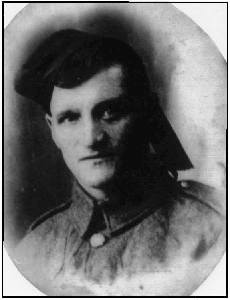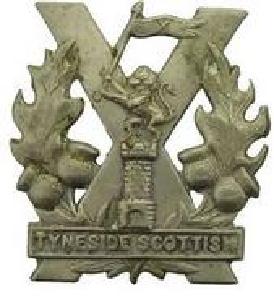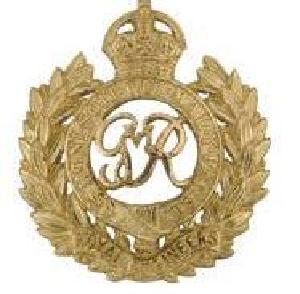
George Smith

Tyneside Scottish Badge

Royal Engineers Badge
George Smith was born on 21st December 1881 at Choppington, Northumberland. His parents were William Smith, a coal miner, born at Bishenside, Northumberland and Mary Smith born at Broomhill in the same county. He was baptised George but to almost every one of his friends he was referred to as Doad or Doadie. In 1891, George’s family was living at Choppington Station, Northumberland and included four siblings.
By 1901 George was 19 years old and working in the coal mines as a putter below ground. At this time his sister Isabella 14 was in the house at 5th Row, Choppington.
George married Annie Brown from Seaton Delaval, Northumberland about 1905 and in 1911 they lived at Third Row Choppington Colliery where he was a hewer in the colliery. At this time they had three children: Mary Thompson 5, Eliza 3 and Isabella aged 1.
When we look at the life of George Smith he spent his early years, living with his parents, in Rose Cottage at Choppington Station. This was a detached building situated between the German House and Sunniside. The German House was always referred to by the locals as “The Jarmin Hoose,” and was built by the brickyard owner John Burns in 1869. George was married to Annie Brown, whose family originated from Seaton Delaval. They first lived in the Third Row, at Choppington Colliery, and had four daughters, Mary, Isabella, Eliza, and finally Georgina Edith Cavell, whose second and third forenames were the name of the British nurse, who was executed by the Germans, during the First World War for spying.
George was initially in the Northumberland Fusiliers (Tyneside Scottish) and then served with the Royal Engineers as a sapper. When George was serving his country he was awarded the Military Medal for his gallant action in rescuing three of his comrades who had been buried alive in a shaft by the explosion of a German land mine at Givenchy on June 2nd 1917. He later suffered a wound to his right leg caused by the enemy's bullet and taken prisoner by the Germans. He was only a prisoner for eight days when his leg began to deteriorate and it had to be amputated by a German surgeon
Eventually George returned home from the war, and moved into a house situated between the Railway Tavern and the Unitarian Chapel on Choppington Station bank. George was a very private person, and he never talked about his Military Medal, or even how he won it, but if someone called the German people, he would say that they should not judge all Germans by the same standards of the thugs of Adolph Hitler. He also went on to remind them that when he was held prisoner, if it had not been for the skills of the German medical staff he would not be sitting there talking to them today, as when his leg was deteriorating it was decided that it should be amputated. The problems facing the medical staff at that time was a shortage of medical supplies, and they decided to dress the remaining part of his leg in brown paper, and their medical skills eventually kept him alive.
Deep down, George was said to hold the German people in great esteem, despite the pain he had suffered and also the loss of so many colleagues from his own little mining village of Choppington.
On 9th April 1925 a ceremony took place at Choppington for the unveiling of the War Memorial for the eighty-two local men killed in action during the First World War. The memorial was made by Mr. R Oliver, with the cost being approximately £250.00. Mr. F C Hallowes of Bebside Hall was elected to do the task, but owing to indisposition was unable to perform the duty. Military Medallist, Sapper George Smith who was a native of Choppington was unanimously elected to act as his deputy and carried out the ceremony. The memorial which was a tablet of Heworth Stone, with a bronze plate bearing all the names of the dead in the centre, occupied the site in front of the Memorial Hall.
When George died in 1951, aged 69, he was buried alongside his wife in the extension of St Paul's churchyard.
Coincidentally his youngest daughter, Georgina who was named after him, bore the same nickname by family and friends. Her nephews and nieces all called her Aunt Doad and not Aunt Georgina. When George's oldest daughter Mary married, she moved into a flat and later gave birth to a son. As time passed George became concerned for his grandson’s safety and decided to erect a fence to keep him in the yard. While erecting the fence a nail flew back and struck him in the right eye causing so much damage he lost his sight in it. He then wore a plastic eye patch over it during the remaining years of his life.
Thanks and acknowledgement to John Dawson for information posted on the Past Times History Group website.

